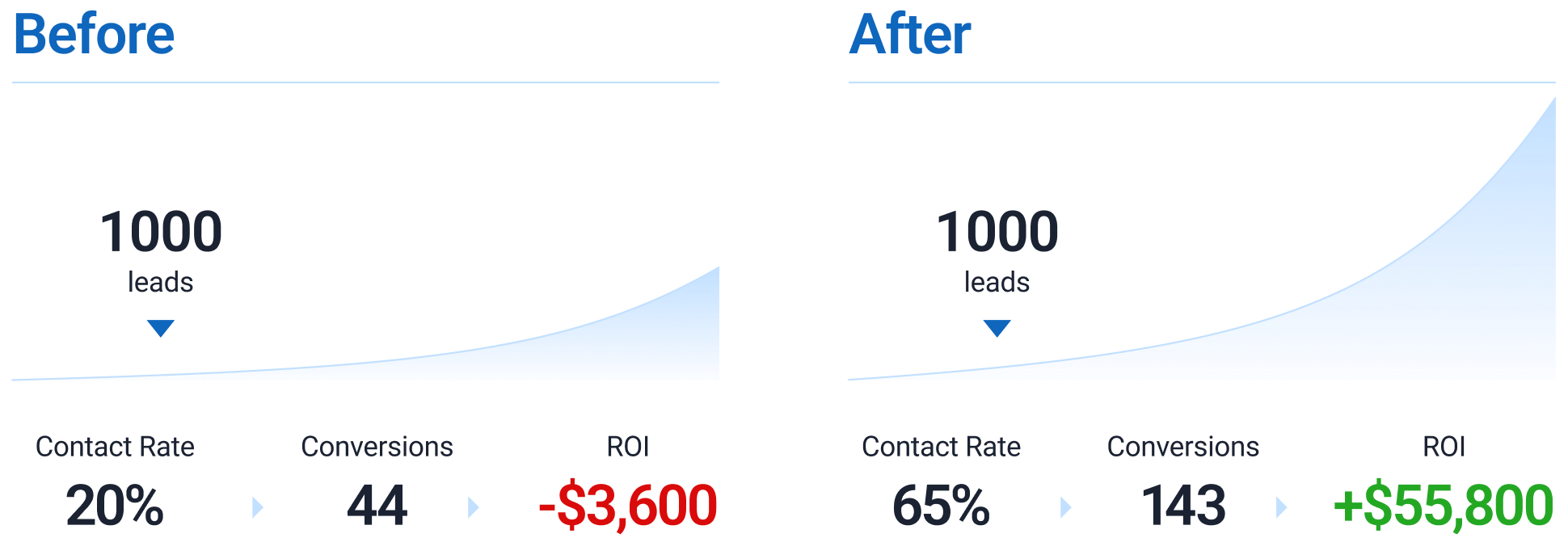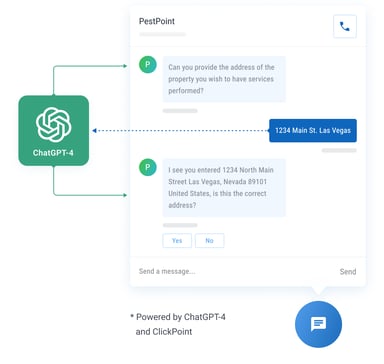Pull Lead Distribution in Call Centers

Getting your leads to the right place at the right time is key to bumping up sales and getting the most out of your sales leads. In traditional sales models, agents are given leads to work via a number of distribution methods. This is effective but has the potential for a host of inefficiencies.
Pull distribution is a distribution strategy that addresses these inefficiencies to maximize ROI from leads.
The Origins of Pull Distribution in Lean Manufacturing
After World War II, during the reconstruction of Japan, Japanese industries incorporated the concept of Kaizen. "Kaizen" is a Japanese term for positive change or improvement. In business practice, this means that companies are striving to improve at all levels at all times.
Kaizen led to the development of what we now call lean manufacturing.
In the 1950s and '60s, lean manufacturing revolutionized production processes. With roots in Toyota's automotive production, "The Toyota Way" introduced the idea of lean manufacturing to address traditional manufacturing inefficiencies.
These inefficiencies include holding unused inventory, producing more products than demand can support, and adding unnecessary features.
Imagine an assembly line cranking out cars that no one is buying. Lean manufacturing moved toward a demand-based model while delivering consumer-relevant products.
Lean manufacturing principles, including demand-based manufacturing and customer value, form the foundation of the pull process. These principles have transcended manufacturing, influencing sectors like software development with agile methodology and with pull distribution in lead management.
Understanding Pull Distribution in Lead Management
Pull distribution contrasts the conventional “push” distribution model by focusing on lead demand and sales agent availability. Pulling leads allows sales agents to access leads when they’re ready to contact them. This is a much more efficient way to work.
With the push method of assigning leads, salespeople receive leads using several different distribution methods. These methods include shotgun, weighted, and round-robin distribution. All of these methods can be effective. However, push distribution works best for small teams with limited lead flow.
For companies with high lead flow, when leads are pushed to agents regardless of readiness or availability, they can pile up or get lost.
In a pull system, leads aren't owned by individual agents but are held in a pool. When a salesperson is ready, they request a lead from the pool. When agents pull a lead, they have to work and disposition it before pulling another lead. The agent only “owns” the lead after reaching a critical sales stage or closing the lead.
As a result, leads don't go cold when sales agents are out to lunch, on a break, or on vacation. Leads remain in the pool until an agent pulls them, ensuring they don't get lost.
If an agent fails to close a pulled lead, it returns to the pool and is made available for other agents to work. Pull also ensures that more attempts are made. If an agent doesn’t reach a lead, it returns to the pool for another contact attempt.
Top closers who work quickly will pull more leads, have more contacts, and close more deals. This promotes healthy competition in sales teams. It also ensures that top sellers aren't inhibited by lead availability.
Pull distribution makes the lead, rather than the agent, the center of the sales process.
Pull Prioritization
Another advantage of pull distribution is the way that prioritization can be structured. Leads can be segmented into prioritization queues. When sales reps log on in the morning, they will pull the hottest leads first, typically web leads that came in overnight. Those leads will be in the first available queue.
After those leads have been called, they cascade into another queue, and the next segment of leads is called; this segment might be callbacks, upsells, canceled accounts, or win-backs. After that list is called, it cascades down, and the following list is called.
Once all lead segments have been called, additional contact attempts can be made from the first queue. This ensures your team does not hurt your reputation by calling a prospect too often.
Benefits of Pull Distribution in Call Centers
Improved Lead Response Time
Available agents contact leads promptly, reducing wait times and increasing the likelihood of conversion. This significantly boosts the lead penetration rate by ensuring that more leads are reached within a shorter timeframe.
Enhanced Productivity and Efficiency
Pull distribution encourages efficient work practices. It ensures agents focus on leads they can handle, promoting better time management and productivity. By concentrating on manageable leads, agents maximize their efforts. This improves the lead penetration rate as more leads receive attention.
Increased Sales Opportunities
The key to effective pull distribution is prioritization. Prioritizing leads based on potential value and readiness for engagement optimizes sales efforts and increases conversion chances.
Focusing on high-value leads facilitates high-quality interactions and achieves a high lead penetration rate. Increasing contact rates boosts these efforts. Engaging the most valuable leads, coupled with an effective contact strategy, increases conversions, revenue, and lead ROI.
Contact Rate
A robust contact rate through pull distribution highlights a critical aspect of sales success. Contact rate is the percentage of leads successfully contacted by sales agents. This directly impacts the return on investment for sales and marketing efforts. Understanding this metric's influence on business outcomes is crucial.
A strong contact rate is vital because more leads move through the sales funnel. This increases the opportunities for conversion.
This efficiency makes the most of available resources and enhances the potential ROI from marketing campaigns.
Impact on ROI
The difference in contact rates significantly influences ROI. Engaging more leads requires a higher contact rate. Higher engagement means more sales opportunities and, potentially, a higher conversion rate.
This increase directly contributes to higher revenue and a better ROI. Conversely, a low contact rate indicates an inefficient lead management process. Leads remain uncontacted, or they go cold, leading to missed sales opportunities.
By implementing pull, SalesExec users have evolved from contact rates as low as 20% to 65%+.
Success Stories of Pull Distribution
SalesExec clients, using pull distribution, report dramatically improved contact rates, increased sales conversions, and more efficient sales processes.
Terminix reduced lead response times from thirty minutes to under five with SalesExec’s pull system. Trugreen increased digital sales by about 75%.
Monica Brogan, director of inside sales at Rentokil, reported, “Our contact rate went from 22% to 65%.”
The collective annual revenue for those three companies is around ten billion dollars. It's easy to see how these increases translate to significant dollar figures.

Increasing Contact Rate from 20% to 65%
The disparity between a 20% and 65% contact rate is stark:
An increase from a 20% to a 65% contact rate more than triples the number of leads engaged. That is, it increases the engagement by 325%. This broadens the sales pipeline and significantly increases the potential for conversions and revenue.
Imagine increasing your revenue from leads by 325%, and you’ll start to understand the power of pull.
A high contact rate signifies efficient use of marketing resources. The sales team effectively utilizes leads generated, ensuring a good return on marketing spend.
Furthermore, businesses that achieve higher contact rates tend to outperform their competitors. Capitalizing on more opportunities and securing more sales increases market share. This demonstrates the effect of optimized contact rates on overall business success.
Increasing contact rates transforms the sales process from one of waste and inefficiency to one of high productivity. The increased engagement leads directly to improved sales outcomes. This drives a higher ROI. The critical role of an effective pull distribution system makes this possible.
Businesses that improve contact rates through efficient lead management strategies like pull achieve higher revenue and improved market standing.
Key Components of Effective Pull Distribution
A successful pull distribution system requires:
High Lead Volume
Organizations managing a high volume of leads will benefit the most from pull distribution.
Quality Leads
Organizations should ensure that their leads are verified and qualified to get the most out of pull distribution.
Lead Prioritization
Implementing intelligent lead scoring ensures that high-priority leads receive attention first. Segmenting leads into prioritization queues ensures a safe calling reputation while maximizing contact attempts.
Agent Availability and Capacity Management
Agent availability is key to effective lead pulling. Monitoring lead flow and agent capacity helps to dial in the shortest response times and highest contact rates.
Summary
Businesses looking to improve their lead management processes should consider pull distribution as a step toward enhanced efficiency. Evaluate your current lead management strategy and consider how integrating pull distribution could elevate your sales operations. To learn more about pull distribution in SalesExec, book a demo.





.png?width=384&name=leadexec.clickpointsoftware.com_Account_Dashboard%20(7).png)